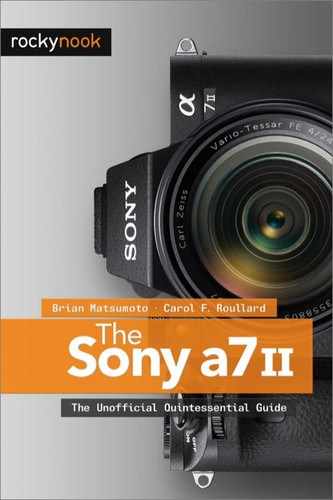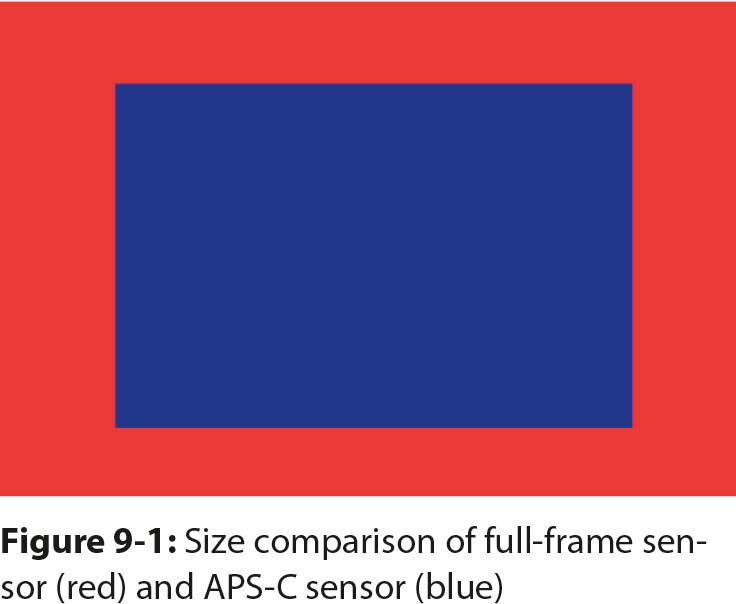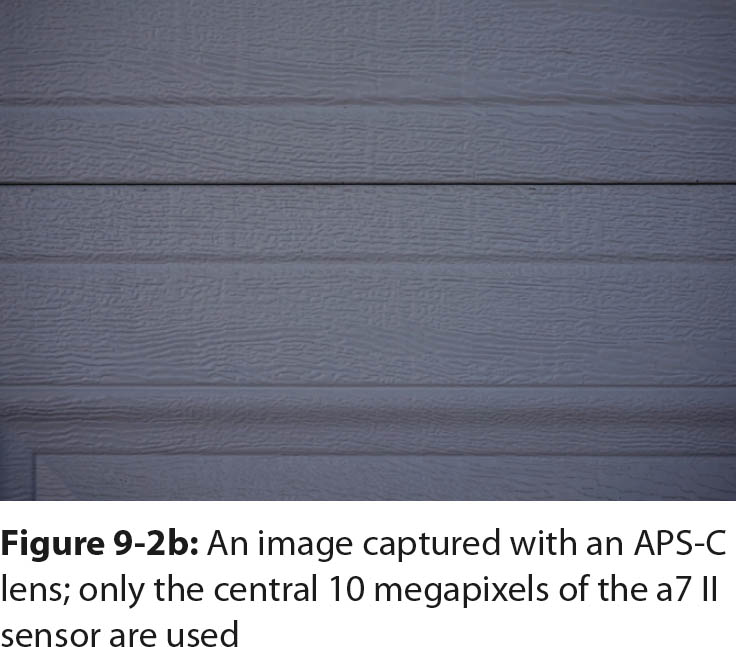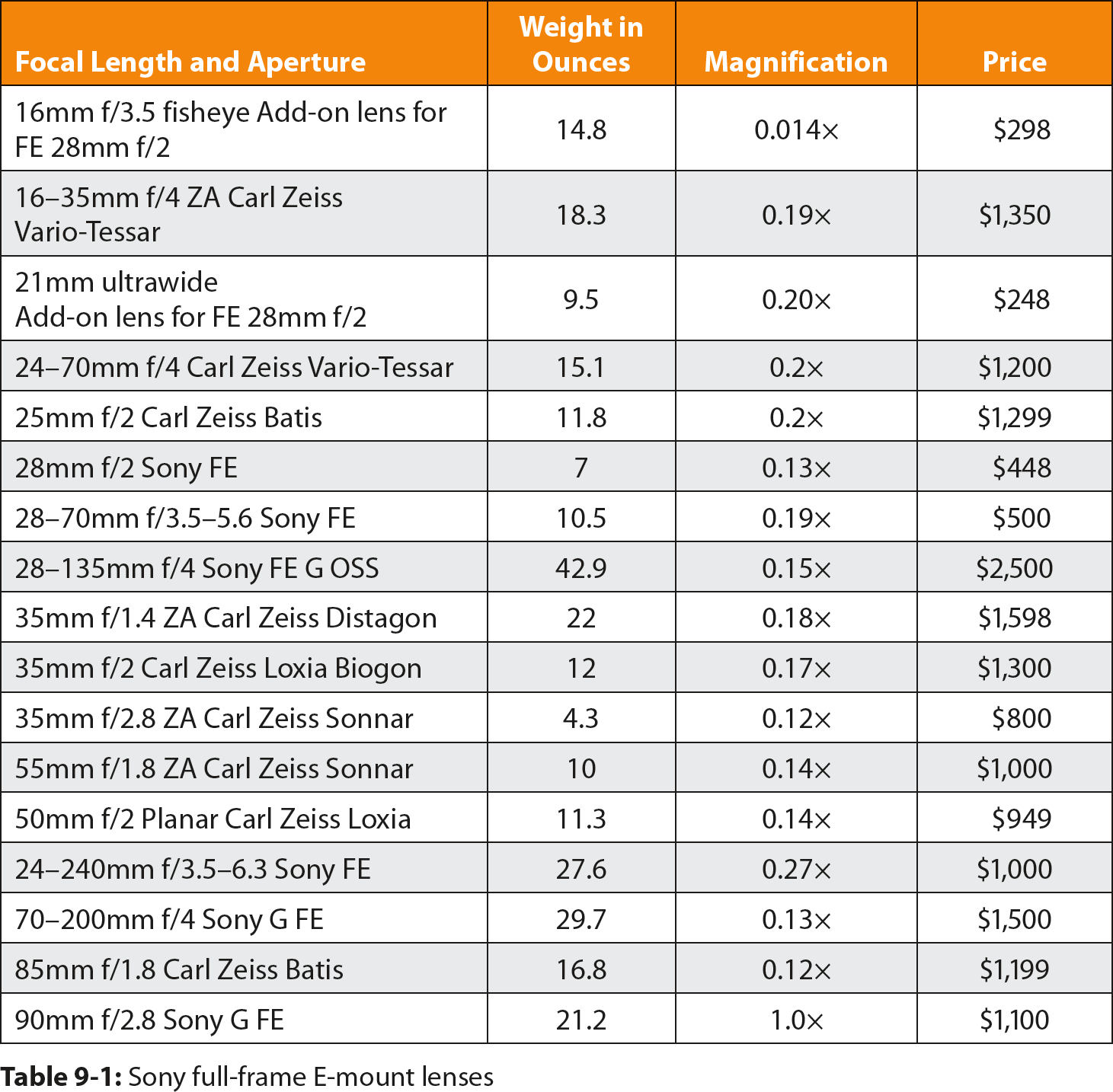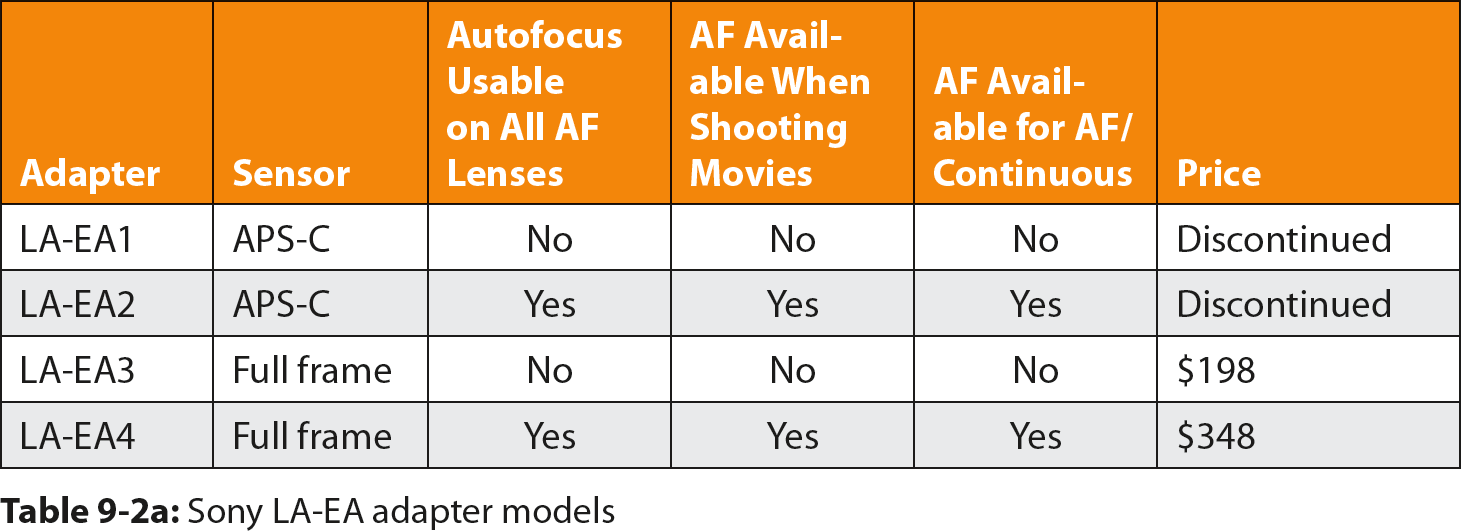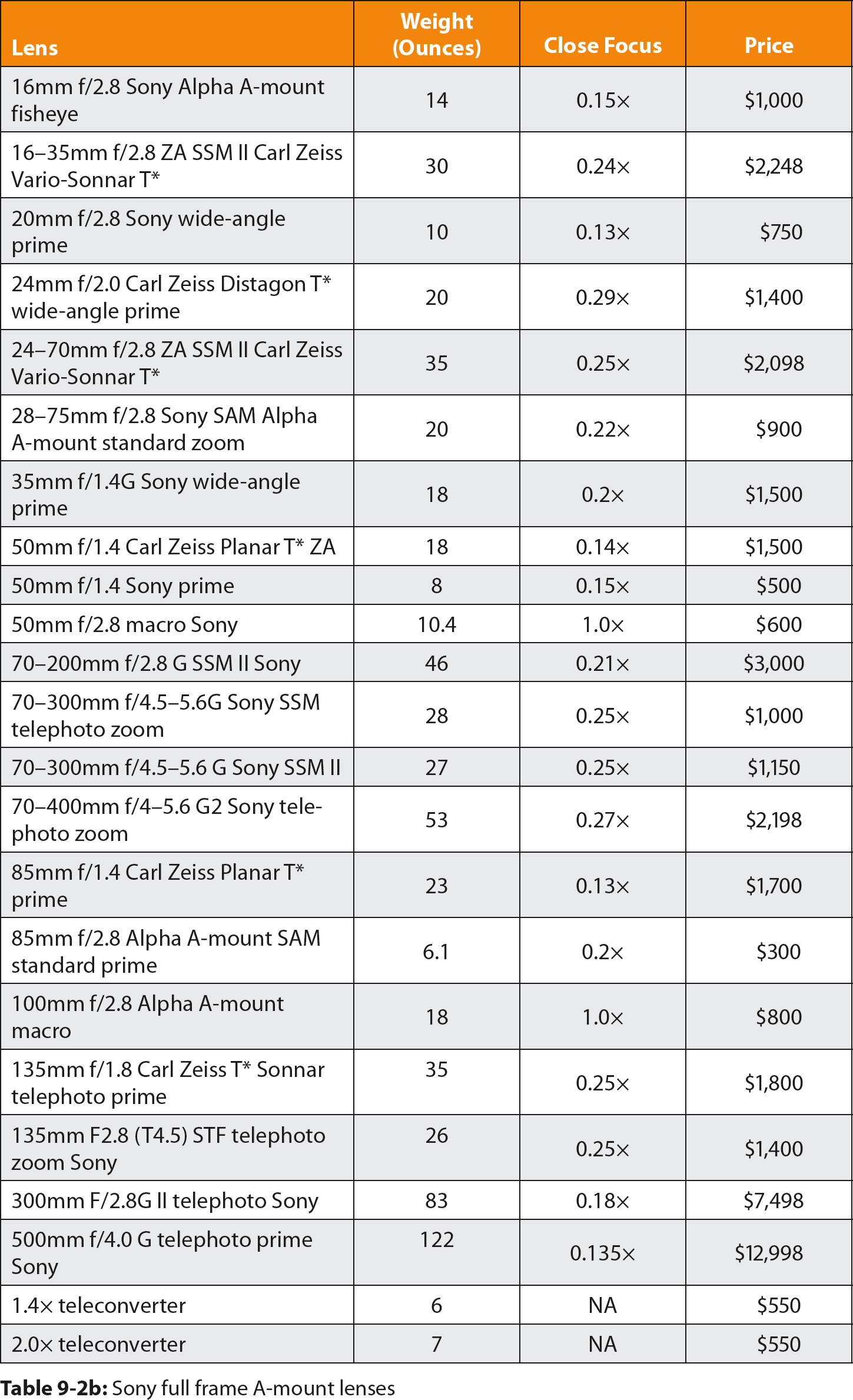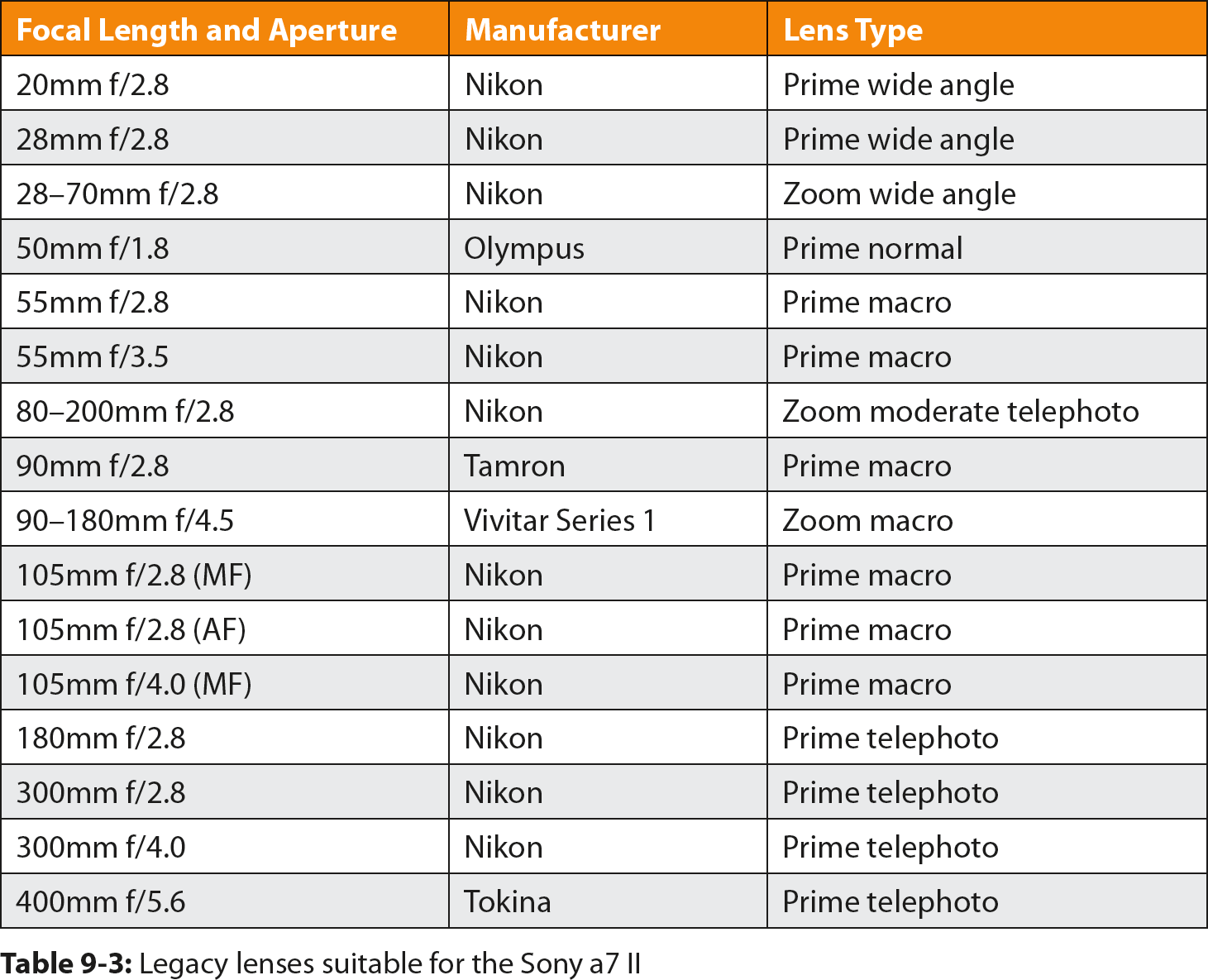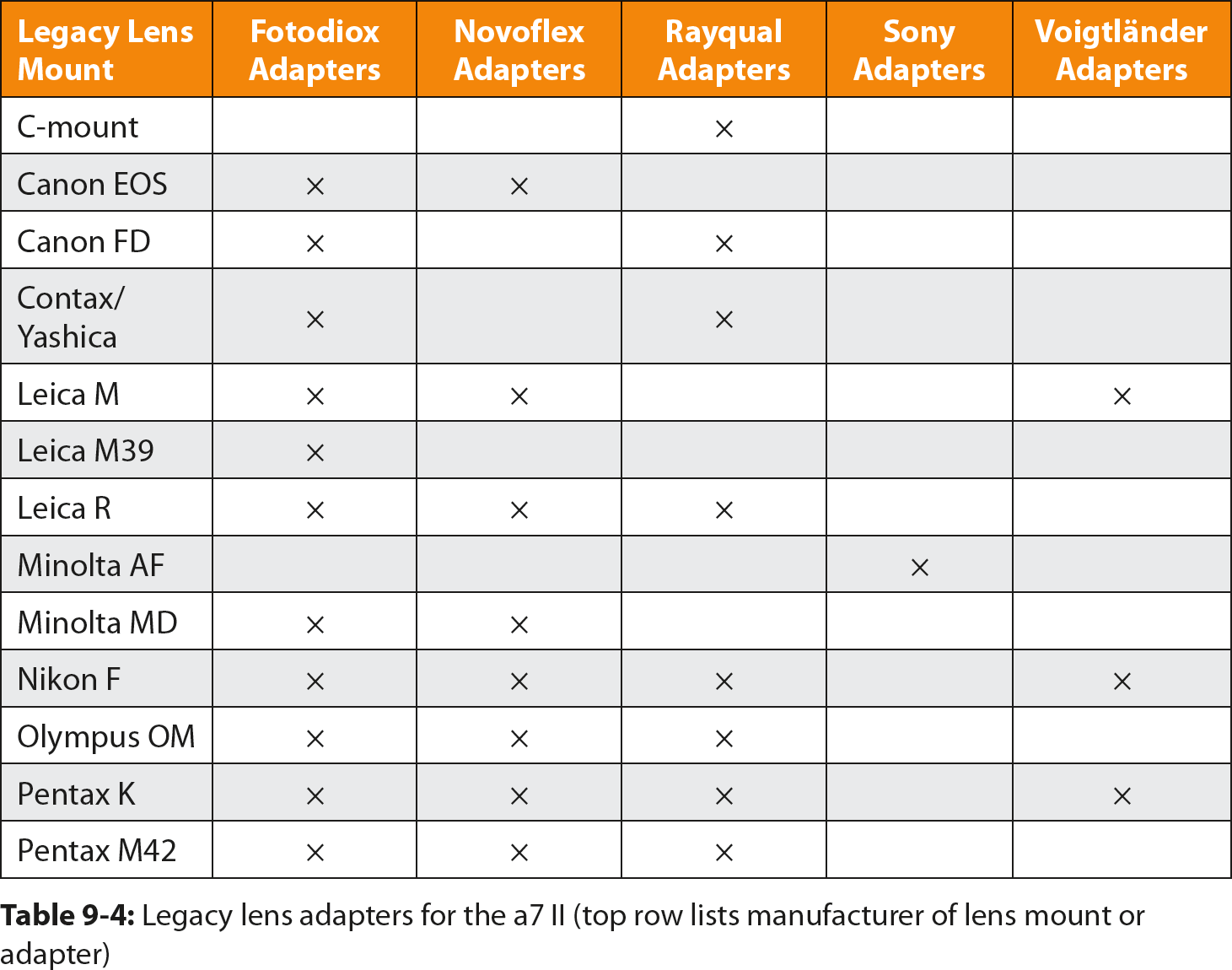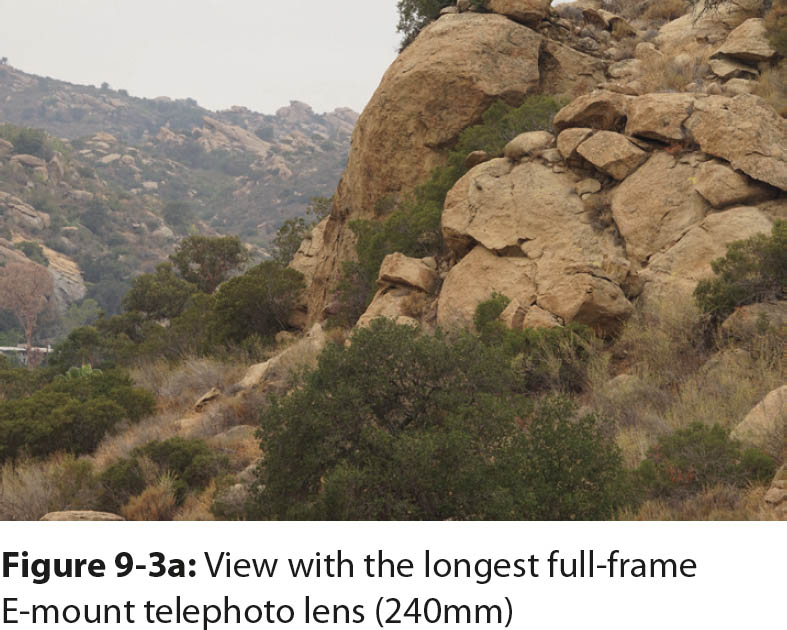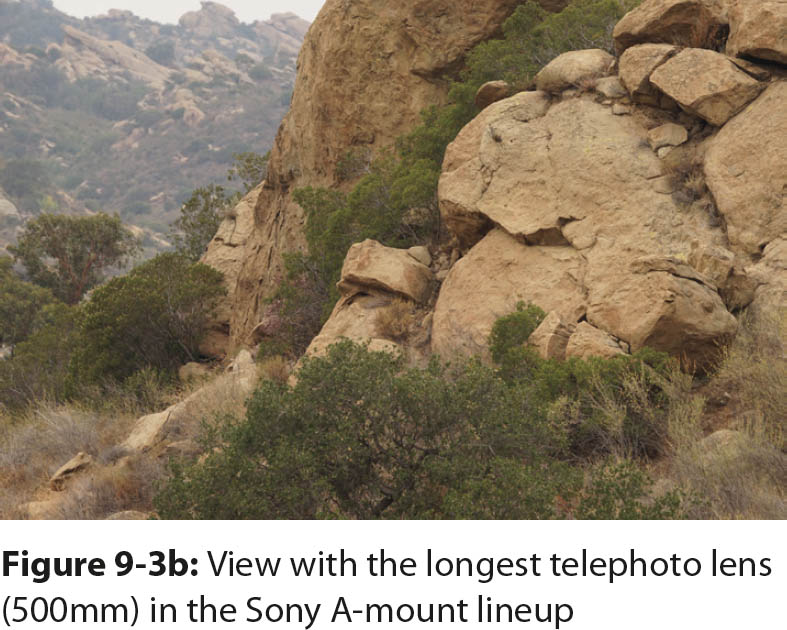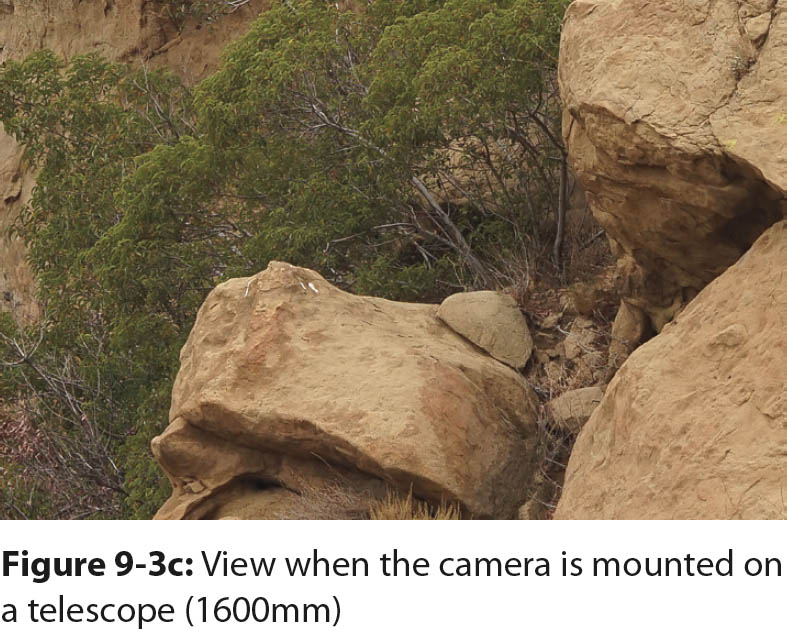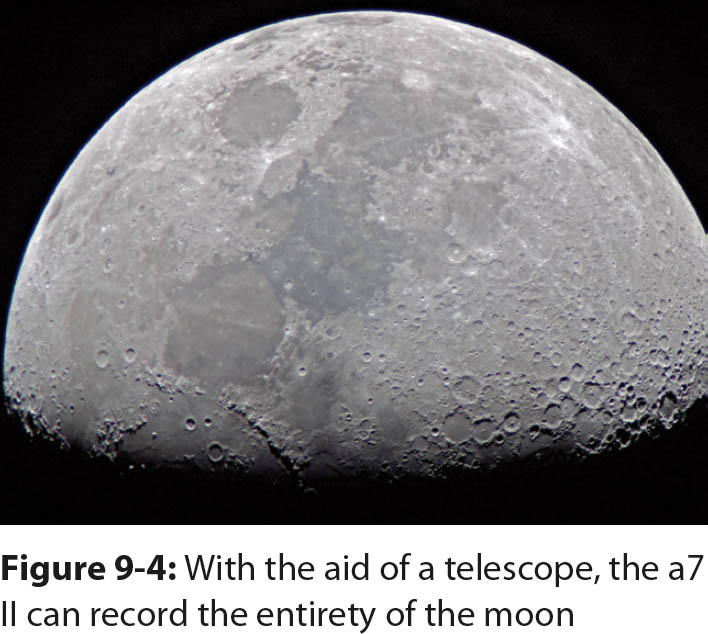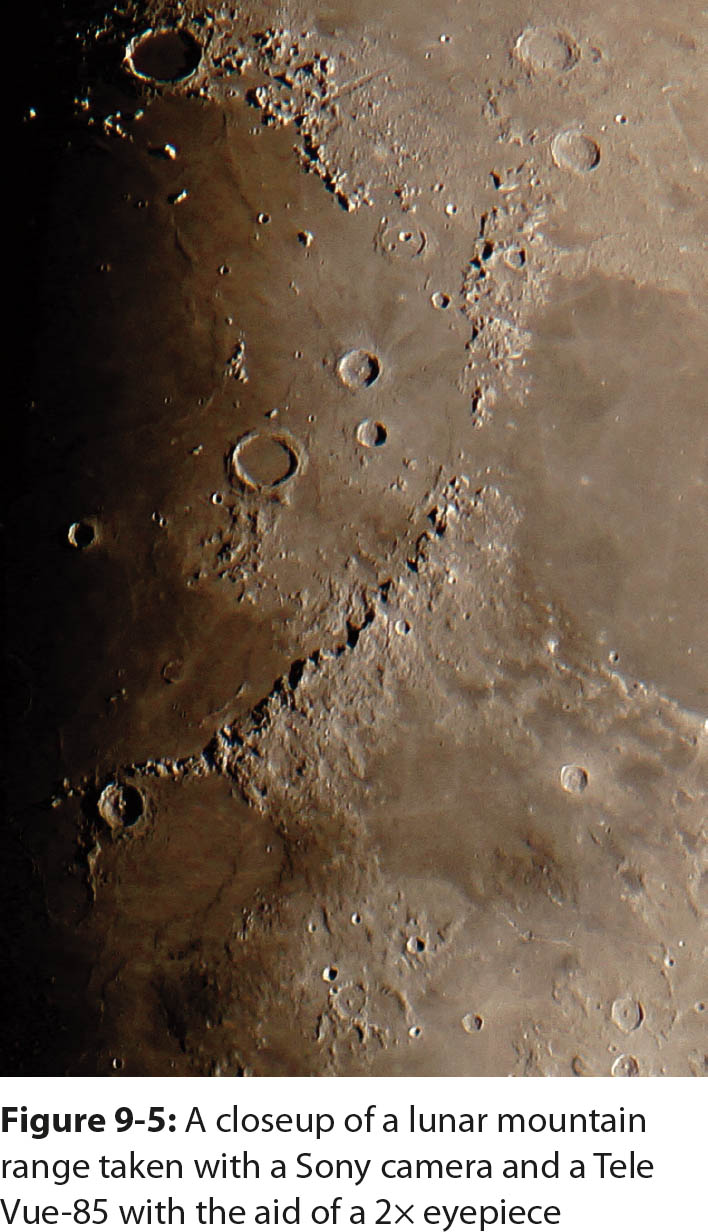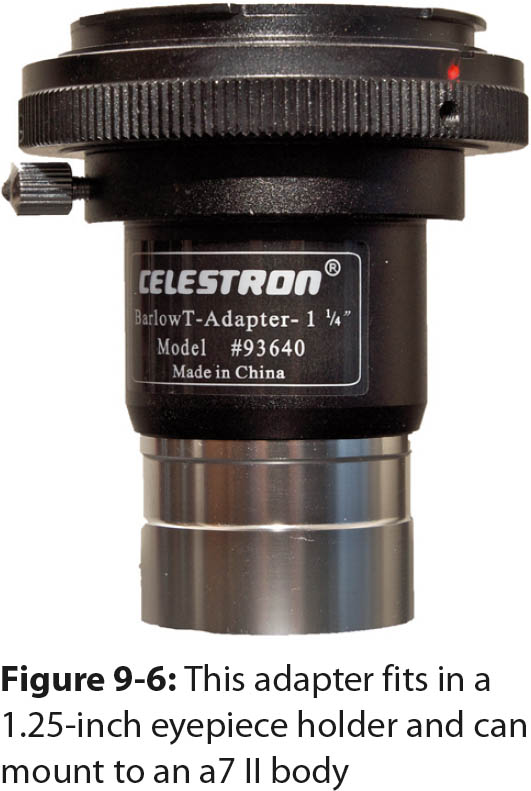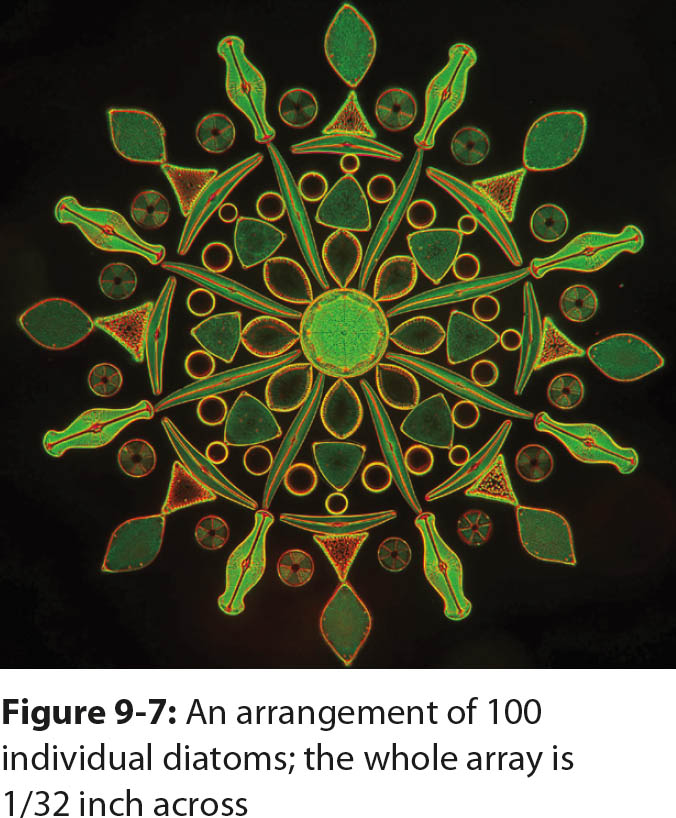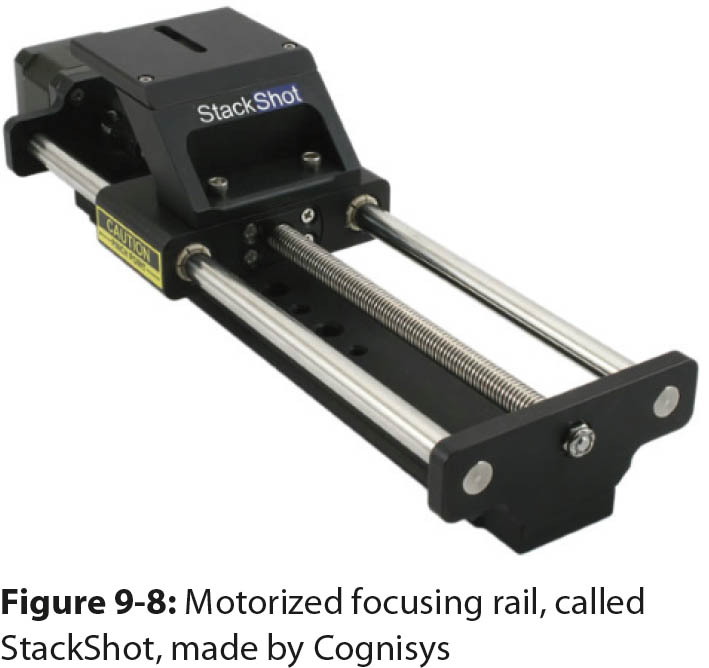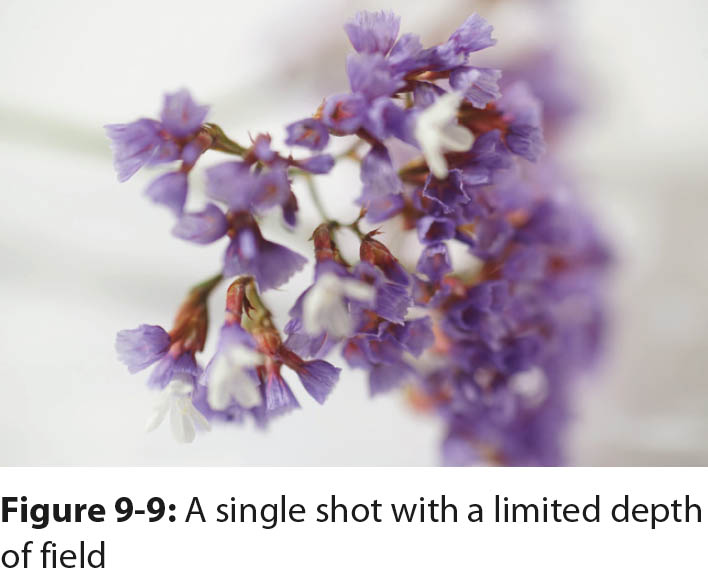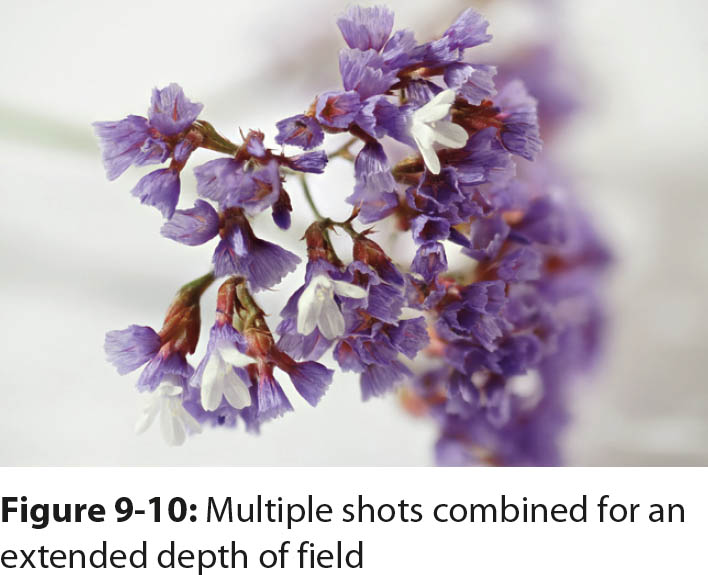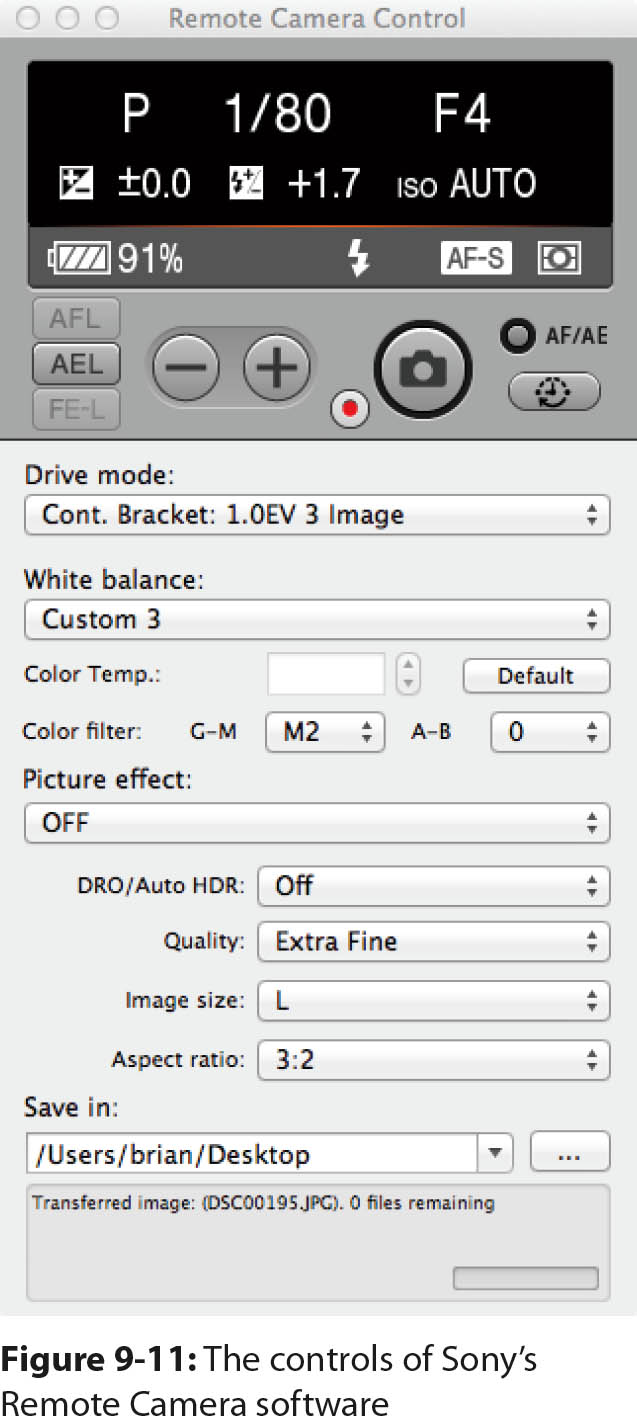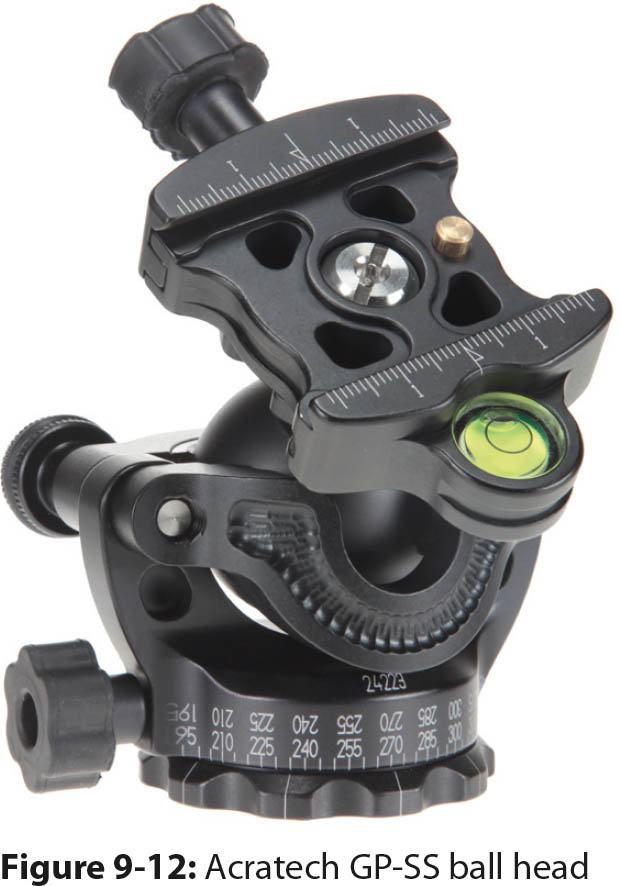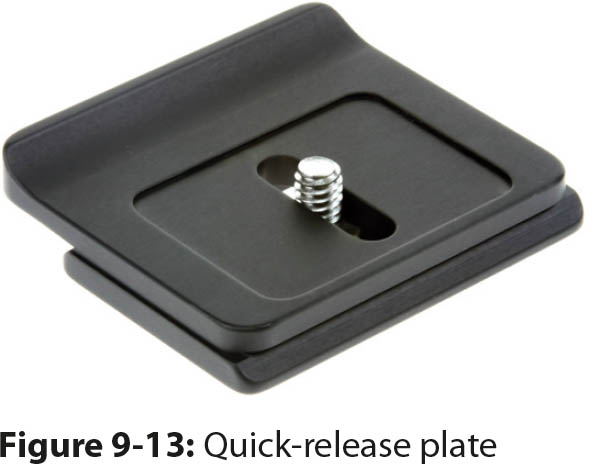9Chapter 9: Accessories
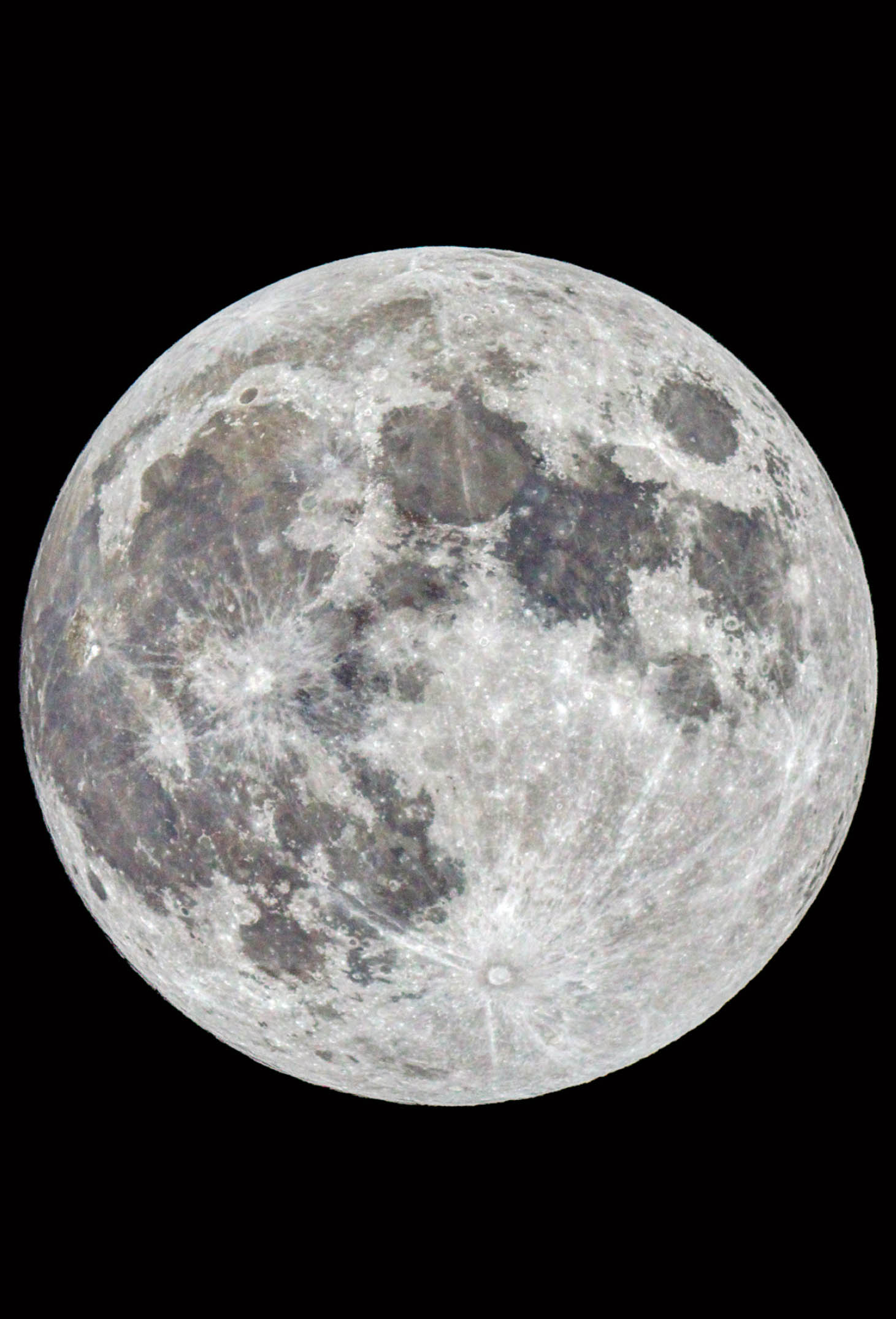
Introduction
To get the most out of your Sony a7 II camera, you need to use high-quality lenses. Sony sells 17 such lenses (including Zeiss-branded models) that are designed to be used on the full-frame sensor camera. The lenses can also be used on cameras with a smaller APS-C sensor.
The lenses are optically and manually excellent, which is reflected by their price. In many cases they exceed $1,000. Professionals and hobbyists have access to lenses that cover the most-needed focal lengths for general photography.
There are nine prime lenses whose design provides maximum sharpness, small size, and excellent low-light performance. For versatility, there are three zoom lenses designed specifically for professional photographers. These lenses are invaluable to commercial photographers because they encompass a range of focal lengths that are most frequently used on photographic assignments.
Lenses with additional focal lengths are available from third-party manufacturers. Samyang produces a fisheye wide-angle lens with a field of view of 180 degrees. It distorts straight lines into curves and has a 12mm focal length. To use long lenses, you will need to use adapters and lenses that were not designed specifically for the a7 II.
Three lenses that are attractive to critical users are the 16–35mm wide-angle zoom, the 24–70mm midrange zoom, and the 70–200mm moderate telephoto. All three lenses have a fixed aperture of f/4. There is a paucity of high-speed zooms (those with apertures of f/2.8) and superlong telephotos (those with focal lengths from 300–600mm). However, if you need these types of lenses, you can find them and use them with adapters. Later in this chapter we will discuss the LA-EA4 lens adapter and the line of Sony A-series mount lenses. The adapter lets you maintain fast autofocus with only a slight sacrifice in aperture (1/3 f-stop).
Sony sells some lenses that carry the Carl Zeiss label. They are designed in cooperation with the Zeiss Corporation and meet that company’s quality control standards. Many of these lenses are primes rather than zooms.
Sony Lens Mounts and Sensor Size
Sony sells two categories of full frame lenses for their interchangeable lens cameras. The first has the A-series mount, and the second has the E-series mount. The first is derived from the Minolta and Konica Minolta lens mount and is used on Sony SLT cameras—the a99 or the a77 II. The E-mount is a Sony design, and it has a smaller diameter. The focusing motor and stabilization actuators are built into the lenses. In addition, these categories of lenses are designed to be used with either a sensor with an overall size of 36×24mm (full frame) or a smaller sensor with an overall size of 24×16mm (APS-C). The relative sizes of these sensors are shown in figure 9-1, where the area of a full frame sensor is red and that of an APS-C sensor is blue. You can use any Sony lens on your a7 II camera.
Some Sony lenses are designed to work only on APS-C sensors. When they are used on the a7 II, they cannot fully illuminate the sensor, so much of the sensor will not be exposed to light. If you view an image created under these conditions, you can see severe vignetting. Fortunately, the a7 II can compensate for and prevent this effect. The camera can sense when an APS-C lens is mounted on it, and it generates the image only from the center of the sensor (figure 9-2a). When viewed through the viewfinder or monitor, the camera appears to magnify the focal length of the lens by 1.5× because only the fully illuminated portion of the sensor is projected to the screens (figure 9-2b). Of course, fewer pixels are used to record the image. Normally the a7 II will capture an image with 24 megapixels, but when the camera crops the image, only 10 megapixels of the sensor are used.
An optical property that Sony does not leverage is that the size of the imaging circle changes with zoom lenses. When a zoom lens is used at its shortest focal length, the imaging circle is at its smallest. Sony used this minimum size to remove vignetting for APS-C lenses. However, when a zoom lens is set to a longer focal length, the imaging circle becomes larger, and more of the sensor is available to capture an image. Unfortunately, this increased area is not used, but you can access it by overriding the camera software. For the APS-C Size Capture command, set the option to [Off] so the camera can record with more megapixels:
MENU > Custom Settings (5) > APS-C Size Capture > [On], [Auto], [Off]
The default for this command is [Auto], which causes the camera to use the central 10 megapixels when it detects a Sony lens designed for an APS-C sensor. This command also works with Sony A-mount lenses that are designed for APS-C sensors. When you mount these lenses with either the LA-EA3 or LA-EA4 adapter, the camera automatically crops the image to the central 10 megapixels.
The [On] option is for APS-C lenses that cannot communicate their design specifications to the camera, as may be the case with lenses from third-party manufacturers. When you use such a lens with the [On] option, you can prevent vignetting in your images.
Sony FE Lenses
Sony sells a variety of lenses for the a7 II camera (table 9-1). Three professional zoom lenses cover the most useful range of focal lengths: 16–35mm f/4.0; 24–70mm f/4.0; and 70–200mm f/4.0. Together, these three lenses have a range of focal lengths that cover most photographic assignments. Their only disadvantage is price; each costs more than $1,000. But the price is justified by their optical quality, mechanical precision, and robust construction. All three lenses have fixed apertures; that is, the aperture does not vary when you zoom in or out.
Fortunately, not all Sony FE lenses are this expensive. For example, the 28–70mm f/3.5–5.6 lens and the 28mm f/2.0 lens cost about $500. The 28–70mm lens can be an economical replacement for the 24–70mm f/4.0 lens. It does not provide as wide an angle of view, nor does it have a fixed aperture when you zoom, but it generates good images. Considering it is $700 less expensive than the 24–70mm f/4.0 lens, it is a bargain.
Another economical choice is the Sony 28mm f/2.0 fixed focal length wide-angle lens. This is an interesting lens. First, at only $450, it is very economical. It is a very light and compact lens, and its large maximum aperture of f/2.0 makes it suitable for shooting under low-light conditions. In addition, it has two intriguing add-on front lens elements. One converts the lens to a 16mm f/3.5 fisheye lens, and the other converts the lens to a 21mm f/2.8 wide-angle lens. These accessory lens elements cost less than $300 each and make the 28mm lens a versatile performer. When you attach the add-on lens elements, they provide the correct EXIF data to the camera body so your images will be tagged with the correct focal length and aperture. The initial reports on the lens indicate it has excellent central sharpness, but its corner sharpness is not as good as with $1,000 lenses.
Single focal length prime lenses with a Sony or Zeiss trademark are almost as expensive as the zoom lenses. Their prices hover around $1,000. However, these lenses have a reputation for excellent optical performance. As a general rule, the corner sharpness and distortion levels of prime lenses are superior to zoom lenses. In addition, they have larger maximum apertures that allow them to work efficiently under dim lighting conditions. An additional plus is that prime lenses weigh less than zooms.
Of particular interest is the 90mm f/2.8 macro lens. One of the problems with macro lenses is that their automatic focusing does not work well for closeup images. If you need to work with this lens for both closeup and distance work, you need a quick and convenient way to transition from autofocus to manual focus. You switch this macro lens by sliding the focus ring; pull it back for manual focus, and push it forward for autofocus.
A useful jack-of-all-trades lens for travel photography is the 24–240mm f/3.5–6.3 lens, but it is perhaps the least sharp of the Sony FE lenses. Its lesser optical performance reflects a design compromise for its 10× zoom range. Essentially, clarity was sacrificed for versatility. However, its performance is adequate, and its sharpest images are captured between about 24mm and 135mm. For the best optical performance, stop the lens down by 2 f-stops from the maximum aperture. When the lens is zoomed to longer focal lengths, there is a progressive loss of sharpness at the edges, but the center sharpness is good. This lens is comparable to the 28–300mm zooms produced by Canon and Nikon. It sacrifices a bit on the long end; it goes up to only 240mm, and the others go up to 300mm. However, it is a bit wider at 24mm, and the others max out at 28mm. Many photographers prefer to have extra reach at the wide-angle end instead of the telephoto end.
Sony Adapters and A-Series Mount Lenses
Sony has two adapters you can use to attach their A-series mount lenses to the a7 II. The least expensive adapter is model LA-EA3. It has limited autofocus capability; in fact, it will not focus A-series mount lenses that lack an internal focusing motor. This includes some of Sony’s earlier lenses and many Minolta and Konica Minolta lenses because their focusing motors were located in the camera body, not in the lens. Autofocus was enabled when a small pin from the camera body engaged focusing gears on the lens.
The other adapter is model LA-EA4, which is more advanced. It can focus all Sony lenses, including those that do not have a built-in focusing motor. It can even focus the older Minolta and Konica Minolta lenses that were designed for film cameras. We think this adapter focuses as fast as our a77 SLT camera. Essentially, it converts the mirrorless a7 II camera into an SLT camera by using a semitransparent mirror that directs one third of the light to a set of phase detectors to determine focus. The LA-EA4 adapter has a built-in focusing motor, which is needed to autofocus older Sony, Minolta, and Konica Minolta lenses. In addition, it has electrical contacts to drive the focusing motor of Sony’s newest lenses.
Sony uses the following letters to describe the features of their lenses:
• G: The lens has premium optics and superior mechanical design.
• D: Distance Encoder. This technology measures the distance of the subject from the camera. The data is used to avoid over- or underexposure of subjects with high or low reflectivity.
• DT: Digital Technology. These lenses were designed for cameras with APS-C sensors. They do not fully illuminate a full frame sensor.
• HS: High Speed. The gearing of the lens is modified to allow faster focusing. It is available only in lenses that lack a focusing motor and rely on the motor in the camera body. Autofocus is possible only with the LA-EA4 adapter.
• SSM: Super Sonic-wave Motor. This motor resides in the lens body and generates little noise during autofocusing. Silence is important during video shoots because the camera’s built-in microphone will record noise from the lens motor and corrupt the audio track. The LA-EA3 and LA-EA4 adapters can autofocus this type of lens.
• SAM: Smooth Autofocus Motor. This motor resides in the lens body. It tends to be noisier than lenses with SSM and is available on lower-priced lenses. The LA-EA3 and LA-EA4 adapters will enable autofocus for this lens.
As mentioned earlier, the LA-EA4 adapter is so versatile that it enables autofocus for discontinued AF lenses made by Minolta and Konica Minolta. We used this to our advantage when there was a paucity of lenses for the a7 series cameras. For example, we found the Minolta 100–300mm f/4.5–5.6 APO lens to be excellent for use on the a7 II. This telephoto zoom provides greater reach than the 70–200mm f/4 FE Sony zoom. Its disadvantage, compared to the FE lens, is its noisier and slower autofocus. The lens is quite inexpensive; it sells for about $150 used. In comparison to the 70–400mm f/4.0–5.6 A-series mount lens, it is more convenient to use because it weighs less and is smaller. Another great lens is the Tamron 90mm f/2.8 macro. It is designed to work with the A-series mount, and it is excellent for closeup work or regular photography.
Sony used to make four models of the LA-EA adapter (table 9-2a). Two of them have been discontinued—the LA-EA1 and the LA-EA2—but they might be available online at a good price. We recommend that you avoid them, however, because they were designed for APS-C sensors and can cause vignetting if you use them with full frame A-series mount lenses (table 9-2b). The current adapter models can be used with lenses designed for either APS-C or full frame sensors.
We use a variety of lenses, including the Carl Zeiss 16–35mm and 24–70mm, plus the Sony 28–70mm and the 24–240mm FE-mount lenses. We have also used the following lenses with the LA-EA4 adapter: 70–400mm A-series mount zoom lens; 90mm Tamron macro lens; and 500mm Minolta AF mirror lens. Moreover, we have used a variety of legacy lenses from different manufacturers, and we have incorporated A-mount lenses into our photography. We find that the LA-EA4 adapter makes these lenses eminently usable on the Sony a7 II. Because the camera has image stabilization built into the body, we routinely use our long telephoto zooms and enjoy working with slow shutter speeds. The LA-EA4 adapter has a tripod attachment. You can use it to mount your camera on a tripod or focusing rail, which provides a better balance point than when you attach the tripod directly to the camera body.
It’s important to choose the right LA-EA adapter. Sony has made four models of this accessory, and two have been discontinued (table 9-2a). The discontinued models are available used online at attractive prices. If you are tempted to buy one, be aware that they cause vignetting when you use them with full frame A-mount lenses. These adapters were designed to work with APS-C sensors. If you want to use a macro lens on your camera, consider the LA-EA3 adapter. In macro photography, the lack of automatic focus is not a problem because manual focus is preferable, and the LA-EA3 adapter is less expensive. Sony does not offer fast zoom lenses or long telephoto lenses in the E-series mount, so you can use an LA-EA4 adapter and the A-series mount lenses (table 9-2b) to gain this capability and not sacrifice performance.
Before you decide which lens to use, try your standard lens (usually a 28–70mm zoom) and see if you tend to shoot at the extreme focal length. We like different lenses. One of us likes to shoot at 28mm and the other likes to shoot at 70mm. The one who prefers the 28mm focal length bought the 16–35mm lens. The one who prefers the 70mm focal length bought the 24–240mm lens and likes to use its wide range of focal lengths while hiking or walking about. We were pleasantly surprised by the 24–240mm lens. Although some people think this lens is unsatisfactory in terms of sharpness, we think its performance is comparable to the 10× zooms from Canon and Nikon. When we need a long focal length and sharp pictures, we use the Sony 70–400mm f/4.0–5.6 lens with the LA-EA4 adapter.
Legacy Lenses and Used Lenses
A major advantage of the a7 II is its ability to use any lens that has a manual-focus ring. This feature is even more useful now that the camera can stabilize the image for any lens. This allows you to take still images at slower shutter speeds and to keep the subject centered in the viewfinder when you shoot videos.
All you need is an adapter to join the lens to the camera. This can be as simple as an extension tube; one side has a mount that accepts the legacy lens, and the other side has an E-series mount that attaches to the camera. Such adapters take advantage of the short distance between the body flange and the sensor. If the length of the adapter is precisely manufactured, the full focusing range of the legacy lens is maintained. When you set the lens to the infinity focus mark, the distant horizon is in focus on the sensor. The cost of these adapters ranges from $20 to $250.
A glance at an online auction site reveals an abundance of used manual-focus lenses that you can fit to your camera body with a simple adapter. Such lenses can be very inexpensive because people regard them as obsolete. We tested several such lenses on our a7 II. Table 9-3 lists the lenses we found satisfactory. This list is not comprehensive—it represents only the lenses we have ready access to. You can use other manual-focus lenses on the a7 II, such those from Nikon, Minolta, Canon, Leica (M and S mounts), Leicaflex, and Pentax K or Pentax screw mounts.
A good guide when you buy legacy lenses is their cost when new. Unsurprisingly, the most expensive lenses are usually the best made, both optically and mechanically. This is especially noticeable for zoom lenses. When we compared the performance of an inexpensive 70–210mm f/4.0–5.6 AF Nikon zoom against an 80–200mm f/2.8 Nikon zoom, we found that the optical performance of the former was disappointing, and that of the latter was exemplary. Generally, the best zoom lens had a limited zoom range (no more than 3×) and a fixed aperture. For example, we found that the 80–200mm f/2.8 Nikon zoom was satisfactory, but the 80–400mm f/4.5–5.6 Nikon zoom was not.
Our best-performing legacy lenses have fixed focal lengths. We recommend that you search online forums for user evaluations to learn about other people’s experiences. For example, many people like the 180mm f/2.8 Nikon telephoto lens. We found that it was one of the sharpest lenses we used on our Sony camera. In contrast, we and many others are disappointed with the 500mm f/8.0 mirror lenses sold by several manufacturers. A recurring complaint is the unattractive bokeh from this type of lens. Bokeh refers to the appearance of out-of-focus regions in a picture. Good bokeh is evidenced by a gradual loss of sharpness at the edges. Specular highlights appear as enlarged circles with soft edges. Mirror lenses render out-of-focus specular highlights as bright donuts with sharp edges. The brighter the point of light and the more out of focus it is, the larger and more evident the donut. In addition, images taken with mirror lenses are soft, and the contrast in these images is lower than images taken with refractor-type lenses.
Manual-focus macro lenses always seem to perform well. Olympus, Pentax, Canon, Minolta, and Nikon consistently made excellent lenses in this category. They were designed to produce the best results for closeup photography, but their performance in distance photography is also excellent. We have found that other companies manufactured good-quality lenses in this category too. For example, we use a 90mm f/2.8 Tamron macro lens, and our favorite zoom lens is the 90–180mm f/4.5 Vivitar Series 1 macro zoom.
Using Manual Focus Legacy Lenses
Focusing
To use a manual focus legacy lens, you have to be able to focus manually. Several strategies make it easier. First, make sure the diopter adjustment on the eyepiece is set correctly. You have to evaluate the sharpness of the image on the screen, so you cannot afford to have the screen out of focus. Remember that the viewfinder generates a sharper image than the monitor, so it is more reliable for manual focus.
Second, turn the aperture ring on the lens to its smallest value so the diaphragm is fully open. This will create a shallow depth of field so the image will blur rapidly when you turn the focus ring. If you stop the lens down, the depth of field will be large, and the image will not snap in and out of focus as obviously. If possible, focus with the widest aperture, then stop down the lens just before you press the shutter button. A slight focus error can be masked by the larger depth of field.
Third, take advantage of the Peaking and MF Assist features, both described in chapter 6. Peaking is good for rapidly identifying focus; however, it is less precise than MF Assist. The former is good for active subjects, and the latter is best for stationary subjects.
Unless you have altered the Custom Key Settings, you can use a handy feature with the C2 button. It normally activates the Focus Settings command. When you mount a legacy lens, you can press the C2 button to immediately access MF Assist. A second press generates a magnified preview of the image.
Exposure Adjustment on Legacy Lenses
Aperture Priority is the most efficient mode for setting the exposure. When you use a fixed ISO value, this mode automatically provides the best exposure by adjusting the shutter speed. You control the light throughput by choosing the aperture, and the camera changes the shutter speed in response to the aperture. You can override the exposure with the exposure compensation dial, and the image will be brightened or darkened because the shutter speed will be slower or faster. In contrast, when you choose [ISO AUTO], exposure compensation adjusts the sensitivity of the sensor. The gain, as indicated by the ISO, is raised or lowered as you rotate the exposure compensation dial, and the shutter speed stays the same.
Generally, when you use a legacy lens you have to focus manually. As previously mentioned, a good strategy is to focus with the lens wide open (use the smallest aperture number) because the depth of field is shallow, and the image appears to snap in and out of focus as you turn the focus ring. Just before you take the picture, you rotate the lens aperture ring to stop it down to the desired depth of field, then you take the picture. When you use aperture priority shooting mode, you will see the shutter speed increase as you stop down the lens.
When you use a long telephoto lens, camera movement during the exposure can blur the picture, but Sony offers features that help eliminate blur. E-mount lenses often carry the OSS designation, which means Optical Steady Shot. This describes a built-in mechanism that counters camera movement with optical elements in the lens. The Sony a7 II has built-in image stabilization that works with any lens, including legacy lenses.
There is one important difference with legacy lenses, though. Sony A-mount and E-mount lenses transmit their focal lengths to the camera body. This is important for stabilization because long focal lengths tend to exaggerate movement. They have a higher magnification, which increases the appearance of movement. Legacy lenses cannot transmit their focal lengths to the camera, so the a7 II has a command you can use instead. First, be sure the SteadyShot command is [On]:
MENU > Camera Settings (7) > SteadyShot > [On], [Off]
Then go to the SteadyShot Settings command, which is actually a gateway to two other commands. Here you can choose manual SteadyShot operation, then select the focal length of the lens you want to use. The commands are as follows:
MENU > Camera Settings (7) > SteadyShot Settings > SteadyShot Adjust. > [Manual]
Normally, this command is set to [Auto], which is for Sony lenses that transmit their focal length to the camera. But when you are using a legacy lens that cannot do so, select [Manual] and the following option is enabled:
MENU > Camera Settings (7) > SteadyShot Settings > [SteadyS. Focal Len.]
When this option is enabled, you can select a focal length that matches the lens you wish to use:
MENU > Camera Settings (7) > SteadyShot Settings > SteadyS. Focal Len. > [select focal length of legacy lens, from 8mm to 1000mm]
If you use a 400mm telephoto lens, set SteadyS. Focal Len. to [400mm]. We have used this command to obtain sharp, handheld pictures with a Tokina 400mm f/5.6 lens. Considering that there is no E-mount lens with this long of a focal length, this legacy lens has been useful. It is much less expensive than the Sony 500mm f/5.6 lens (estimated cost of $12,000, plus $350 for the LA-EA4 adapter). We purchased the Tokina lens for less than $100 (plus an adapter for $100). Although this lens has to be used with manual focus and is probably not as sharp as the Sony lens, it does a credible job for those who want to experiment with long-lens photography.
Adapters for Legacy Lenses
Table 9-4 is a list of lens adapters that are available for the a7 II. It also indicates which mounts are available for a legacy lens mount. The prices range from $40 to $350. The most expensive is the LA-EA4, which converts the mirrorless a7 II camera to an SLT-type camera. That adapter has a motor for autofocusing and electrical connections to enable automatic exposure.
Most adapters have simpler designs and are much more affordable; many are little more than extension tubes. Lots of photographers find the $40 Fotodiox adapters to be perfectly serviceable for most lenses. The more expensive Novoflex, Rayqual, and Voigtländer adapters (each approximately $200) have a better fit and finish. Their dimensions are precisely made, so when they are attached to the camera, the flange-to-sensor distance matches the requirements specified by the legacy lens manufacturers.
This precision allows the lens to reach infinity focus when you set it at the infinity mark on the lens barrel. In some older designs, there is a hard stop at the infinity mark, which can be useful because you can quickly turn the focusing ring to its end point and know the most distant objects are in focus. This advantage can be particularly desirable for astrophotography, where there is not enough light to focus manually. For example, this feature can be indispensable when you photograph the Milky Way.
Low-cost adapters are not as precise, and the distance from the flange to the sensor is shorter than factory specifications. You may never notice this because the lens can still reach focus at infinity, which you can see when you focus through the viewfinder or on the camera monitor. However, if you rely on the lens focus scale and the infinity stop, these adapters will be off.
How much you should pay for an adapter depends on personal preference and your needs. In our microscope work, an adapter has to hold the camera sensor perpendicular to the optical axis of the microscope and at a precise distance from the projection eyepiece. For this type of work we do not quibble over price; we buy the expensive adapters by Rayqual, Novoflex, or Voigtländer. These adapters do not have focusing mechanisms or electrical contacts, and they cost about $200. Considering the high cost of the camera and lens and the need for high quality in our work, it is unreasonable for us to risk degrading our results with a cheap adapter. We have tested some of the low-cost adapters ($20) from eBay; some were adequate even though the machining was poor. Other adapters fell apart or would not properly mount to the lens or fit on the camera body.
Checklist for Using Legacy Lenses
If you want to use legacy lenses, refer to the following checklist of camera settings and lens requirements:
• A legacy lens must have a smooth and precise focus ring. There should be no backlash.
• A legacy lens must have a diaphragm ring that closes down the aperture. Otherwise, make sure the adapter can manipulate the diaphragm.
• Turn the Peaking Level to [Mid]. The default is [Off].
• Set the Peaking Color to red or yellow.
• Be sure MF Assist is readily accessible. The camera’s default settings use the C2 button for this purpose, but if you have changed the button assignment, customize a different button to access MF Assist.
• Switch the mode dial to A.
• By default, the a7 II allows you to use legacy lenses. If your camera will not shoot with a legacy lens, set the following command:
MENU > Custom Settings (4) > Release w/o lens > [Enable]
Telescopes
Long-distance photography fascinates many people. The thought of obtaining a closeup of the moon makes some photographers long for a supertelephoto lens. The longest a7 II FE lens is 240mm (figure 9-3a), and the longest A-mount lens is 500mm (figure 9-3b). Many telescopes have a focal length of 1600mm (figure 9-3c).
To get a long view, you may consider using an apochromatic spotting scope or a telescope. They can be expensive, but they are cheaper than long telephoto lenses sold by camera manufacturers. Most telescopes can be adapted to fit an a7 II.
Sony sells a 500mm f/4.0 telephoto lens for $13,000. It fits the Sony SLT series cameras, but you can buy the LA-EA4 adapter for $349 and use it to attach the lens to your a7 II. Or you can attach your camera to a telescope, like the Tele Vue apochromatic refractor telescope. A new 85mm Tele Vue costs about $2,500 and has a focal length of 480mm. This is still expensive, but it serves a dual purpose. Not only are such refractors good photographic accessories, but they can also be used in their intended role of long-distance viewing (figure 9-4). The Tele Vue is a favorite among telescope aficionados for its clarity and its ability to provide high-contrast images of the night sky. With this telescope, the moon can be recorded in amazing detail (figure 9-5).
Another option is to purchase a catadioptric system. These telescopes were popularized by Meade and Celestron. They tend to be less expensive than apochromatic refractor telescopes, and they use a combination of lenses and mirrors to fold the length of the optical path into a relatively short tube. The popular eight-inch diameter telescopes can fold a 2000mm (79-inch) focal length into a 432mm (17-inch) long tube. These telescopes range in cost from $600 to $2,500. If you have friends who are astronomy buffs, they can help you select a telescope, and most telescopes can be fitted to an a7 II with simple adapters. Optically, the main weakness of catadioptric telescopes is that they have less contrast than a telephoto lens. Also, many photographers do not like these telescopes because of their bokeh.
Most telescopes are equipped with a focusing tube that takes either 1.25-inch or 2-inch diameter eyepieces. The 1.25-inch diameter eyepiece holder is commonly found on telescopes that are designed primarily for visual observation. There are simple adapters that fit in these eyepiece tubes (figure 9-6). When you equip these adapters with a bayonet mount for the a7 II, you are ready to mount your camera to the telescope and take pictures. However, we found that these adapters cause vignetting. A better solution is to use a telescope that has a 2-inch diameter eyepiece holder because the adapters have a wider diameter and are less prone to vignetting.
You may have heard of digiscoping, where a camera is held over a telescope eyepiece. The results from this simple technique are quite impressive, but you can get better pictures by using a camera such as a Sony a7 II, removing its lens, and attaching it to the telescope. If you remove the telescope’s eyepiece, it can project an image directly onto the camera sensor. This prevents image degradation from using a camera lens and eyepiece that are not designed for this purpose.
You need to find a telescope that is compatible with your camera. Because people use telescopes for various purposes, there are many sizes and types to choose from. We will restrict our discussion to smaller telescopes that are light and sturdy enough for fieldwork. These telescopes typically have lenses with a front element that ranges in diameter from 50mm to 100mm (2 to 4 inches). Although telescopes with an objective larger than 100mm are usable, they are too cumbersome to carry and too difficult to handle in the field. Avoid any telescope that is described as a Newtonian reflector. Such telescopes form an image with mirrors only and have an open tube. They are easily knocked out of alignment and are not robust enough to use as field telescopes. You will need a sturdy tripod to support your telescope because you will work at high enough magnifications that it is difficult to handhold the telescope and the camera while you take pictures.
We have used Tele Vue 60mm, 76mm, and 85mm telescopes for photography, and they all have exceptionally high resolving power. The 60mm telescope (360mm f/6) sells for less than $1,000; the 76mm telescope (480mm f/6.3) sells for $2,000; and the 85mm telescope (600mm f/7) sells for $2,495. Their optical performance rivals, and perhaps exceeds, the finest Nikon or Canon telephoto lenses, whose 500mm optics cost $6,000 to $8,000. We have used Nikon and Tokina teleconverters in the optical path to further increase the magnification of the telescope.
Telescopes cannot replace a professional telephoto lens. For one thing, they lack an iris diaphragm, so you have to shoot wide open. In terms of sharpness, this is not a disadvantage because these telescopes are designed to give their best performance at full aperture. The drawback is that you cannot increase the depth of field by stopping down the lens. Also, telescopes are not compact. Most professional telephoto lenses are physically shorter than their focal length so they can be used in the field without a tripod. Finally, telescopes do not support autofocusing. Nonetheless, considering their relatively low cost, they provide a good introduction to long-distance photography.
We typically use the camera viewfinder when we aim the telescope at terrestrial objects because ambient daylight can obscure the camera monitor. Make sure that Peaking is active so you can easily tell when the camera is in focus. Long-distance photography requires that nothing move during the exposure. The a7 II is a superior choice for this application because its electronic first-curtain shutter does not jar the camera body like a mechanical first-curtain shutter does.
Microscopes
For more than 50 years, SLRs have been used on microscopes to take high-magnification pictures of single-celled plants and animals, as well as slides of human tissue. Nikon, Leitz, Zeiss, and Olympus used to sell elaborate and expensive accessories for mounting film cameras onto microscopes. This was required because SLRs (film and digital) were ill suited for the task, and it was necessary to add expensive attachments to overcome their limitations.
For example, special viewfinders and viewing screens replaced the camera’s optical viewfinder. In addition, to avoid the sharpness-robbing vibrations from the movement of the camera mirror, the adapters were equipped with their own swing-out mirror and vibration-free shutter mechanism. Essentially, the camera body was used with its mirror locked up and the focal plane shutter held open with the Bulb setting: functionally, it was a simple but expensive film carrier.
All these deficiencies are remedied with the a7 II. The camera’s Live View finders allow you to precisely focus what is projected on the sensor. The lack of a moving mirror means it cannot cause vibration, and the electronic first-curtain shutter eliminates vibration when the shutter is actuated. Figure 9-7 is an example of what can be recorded with a microscope. This is a diatom slide prepared by Klaus Kemp, who arranged more than 100 diatoms in this star pattern. The whole pattern has a diameter of only 1/32 inch.
To aid focusing, the Live View screen can work at an increased magnification, thanks to the MF Assist command. The Peaking function provides an additional focusing aid. The small size of the image on the Live View monitor or viewfinder is a deficiency. However, this can be remedied by connecting the camera to an HD television with a cable plugged into the camera’s HDMI port. Also, if you download the Sony Smart Remote Control app, you can view the specimen on a tablet; its larger screen facilitates focusing and composing an image.
Microscopes designed for photography are equipped with a trinocular head: two of its eyepieces are used for viewing, and the third is used for mounting the camera. Due to the multitude of microscope designs, it is difficult to provide an accurate, universal description of how to mount a camera to a microscope. Most modern research microscopes can be equipped with a photographic port. Generally this is a vertical 30–50mm-diameter tube with a bayonet mount for a DSLR. You can mount a Sony a7 II to this tube. We found that many of these adapters are set to provide 1× magnification. This is suitable for cameras with an APS-C sensor, but when they are used with a full frame sensor, there is vignetting. The problem can be reduced with tele-extenders. We have used 1.4× and 2× tele-extenders for this purpose.
Older microscopes require an adapter that is fitted to a smaller-diameter (25mm, O.D.) photographic port that includes an eyepiece. This adapter has a bayonet mount to attach the a7 II camera. Martin Microscope Company (www.martinmicroscope.com/MMSLR.htm) sells adapters for about $500.
You can find affordable used microscopes on eBay; however, we recommend finding a seller who specializes in microscopes. Unless you are very experienced, avoid buying from online auction houses. If at all possible, try to buy from a reputable establishment that sells directly and has a record of selling good products. The cost will probably be higher, but you will have more assurance that the microscope has been checked and adjusted for proper operation. We have been very happy with used microscopes and cameras from Bunton Instrument Company (www.buntgrp.com/used_microscopes.htm).
Many professional microscopists use microscopes that are 30 years old or older. When they are equipped correctly, older microscopes can produce excellent images. We use both modern research microscopes and older microscopes made in the 1960s. For most of our photographic work, the older instruments do as well as modern research microscopes that cost 20 times as much. You can get simple and inexpensive accessories to mount an older microscope to your camera. These simple adapters clamp to the outside of the vertical tube. At the opposite end of the adapter is a T thread (T-mount) that can be fitted to a variety of bayonet mounts.
We have tested and used a Celestron model 1040 microscope that costs only $100. It is a simple teaching microscope, and the eyepiece can be pointed vertically for photography or tilted for visual observation. This microscope cannot multitask; you attach a camera when you want to take pictures and remove it when you want to view. Because the price gets you a complete microscope with three lenses, coarse and fine focusing, and a mechanical stage, you must consider its performance relative to its price. Considering that the microscope is less expensive than one lens for a Nikon microscope, you cannot expect the Celestron to match the performance of a $1,000 microscope. An experienced user will detect some softness and lack of contrast in images. Moreover, the microscope focusing controls have some backlash. Having said that, the images are sharp enough with enough contrast to make picture-taking worthwhile. This is the instrument to buy if you are unfamiliar with microscopes, and it comes with a two-year warranty. The one caveat is that many of the accessory camera adapters will not fit on the eyepiece tube. We had used some adapters that fit inside the microscope tube with a friction fit. Such a fitting is suitable for the Sony a7 II because the camera is virtually vibration free when an exposure is initiated. For single-shot photography, the camera’s light weight and low vibration characteristics allow you to take pictures through this simple microscope. If you become absorbed in photomicrography (taking pictures through a microscope), we suspect you will retire the Celestron in search of a more advanced instrument. But for casual use and exploring the micro world, the Celestron is a worthy microscope.
Follow these steps when you use your Sony a7 II on a microscope:
1. Adjust the microscope to get a sharp image of the slide through the eyepiece.
2. Adjust the microscope’s light source intensity so the view through the eyepiece is comfortable. If the light is controlled with a voltmeter, run it at the voltage recommended by the manufacturer. If it is too bright, reduce the light intensity with neutral-density filters.
3. Set the camera’s ISO to 100.
4. Set the camera’s Peaking Level to the medium setting.
5. Set the Peaking Color to red or yellow.
6. Set the camera to A mode.
7. Set the camera to fire without a lens:
MENU > Custom Settings (4) > Release w/o Lens > [Enable]
8. Set the Custom WB as described in chapter 6. Find a clear area on the microscope slide and set the WB to this area, which will calibrate the WB directly to the light source.
9. Focus the image with the microscope controls while you view the image on the camera monitor.
10. Fire the camera with a remote release, or set the camera self-timer to a two-second delay. This will eliminate any vibration caused by manually pressing the shutter button.
For more information about taking pictures with a microscope, we recommend our book Practical Digital Photomicrography, which you can find on Amazon or eBay.
Macro Photography Equipment
The Sony a7 II is beautifully suited for macro photography. You can use the camera with Nikon, Canon, Olympus, Pentax, or Minolta legacy macro lenses. In fact, these lenses can be more convenient to use than modern autofocus lenses. When we work at high magnifications, we find that autofocus is unreliable; it tends to hunt and take too much time to focus. It is more convenient and reliable to use manual focus. Having said that, Sony recently released a 90mm f/2.8 macro lens that has an enviable reputation for usability and convenience. Optically, it is very good. Mechanically, it is well designed and allows a rapid transition from autofocus to manual focus. You pull the focus ring to switch the lens from autofocus to manual focus, so you can use the lens for general photography in autofocus, then switch it to manual focus for macro shots.
When we used this lens, we found that depth of field is extremely limited at high magnification. The a7 II Live View coupled with A mode provides a real-time depth-of-field preview that allows us to determine what is sharp and what is blurred. At 1×, the sharp area is a perpendicular plane to the optical axis of the lens and can be described as an optical section. It is impossible to record the entire three-dimensional structure with one photograph. To record the subject in its entirety, a combined mechanical and software approach is needed. You record several pictures at different focus points, which is known as a focus stack. After you capture enough optical sections, you use software to merge them and reconstruct the entire three-dimensional subject that your eye sees. Basically, you create an image with an extended depth of field. We frequently collect 30 to 40 sections for this type of work.
You can create a focus stack manually, but it is tedious. It is more efficient to use something like StackShot (figure 9-8), which is made by Cognisys. StackShot automates the process of firing the camera and changing its focus. The camera and lens are mounted on a motorized rail that is connected to a controller box. This allows you to set the point of focus and program how many focus points will be taken. Photographers who make award-winning macro photographs have accepted this process enthusiastically.
When you use the Sony a7 II with a good macro lens, it is easy to collect 40 optical sections that can be merged to provide an image with a depth of field that is an order of magnitude greater than what you can attain in a single photograph. Figure 9-9 shows a single section of a closeup subject taken with the Sony a7 II and a Vivitar Series 1 90–180mm macro zoom lens at f/16. The limited depth of field, characteristic of a macro shot, throws most of the flower out of focus. Figure 9-10 shows the result when we used StackShot to generate a focus series and software called Helicon Focus to combine the individual shots to render an image in which the depth of field is expanded tenfold, which you can see when you compare the white flowers in the two images.
The Cognisys StackShot coordinates the firing of your camera and the changing of its focus. This is accomplished with a small interface box that programs the rail to set the limits of the focus range, how far the focus should be altered, and, finally, the number of focus steps that will be used. An accessory infrared remote is attached to the unit and triggers the Sony a7 II shutter. The unit will activate the shutter to take a picture, change the focus, then take another picture. The process is repeated until the entire focus stack is recorded.
If you do not have a StackShot, you can change the focus manually. You fire your camera with a remote release then alter the focus with the lens focus ring. You will need a remote cable release, such as the Sony RM-VPR1 ($65) or the less expensive RMT-DSLR1 infrared Remote Commander. This small accessory resembles a television remote control. It emits infrared light that is detected by a sensor located on the front of the camera. If you own a Sony NEX camera, you may already have this accessory. It costs half as much as the remote cable release. To use it on the a7 II, set the following command:
MENU > Setup (3) > Remote Ctrl > [On]
Use the remote to fire the camera. At first you might think that you have to aim it directly at the camera sensor, but this is not the case when you’re indoors. The beam is sufficiently bright, and the sensor is sufficiently sensitive, that the infrared signal can be detected after it is reflected off walls. When you use your camera outdoors, you can place your hand or another object in front of the camera (outside the view of the lens) and aim the remote at your hand.
The Sony website has software for Windows or Mac that you can download so you can use your computer to fire the camera. After you download the software, it appears as an application (on Macs, it is RemoteCameraControl.app). You can then fire your camera and make some adjustments to it from your computer. You have to open the program, connect your camera to the computer with a USB cable, and set the following command:
MENU > Setup (4) > USB Connection > [PC Remote]
Although you can change several camera settings and trigger your camera with the software, it has one omission: it does not provide a preview of the image on the computer screen (figure 9-11). For this reason, we prefer to use the simpler infrared or cable remote commanders.
Our favorite and most-used remote firing strategy is the Smart Remote Control app. It communicates to either a smartphone or a tablet over a Wi-Fi connection. It provides a preview screen so you can view the subject, and it has controls so you can change the camera settings. When we use the app with our iPad, it aids our macro photography work by providing an enlarged live view of the subject. We described this app and others in chapter 8. If you forget to pack your remote release, remember that you can eliminate vibrations when you press the shutter button by setting the Drive Mode command to [Self-timer], then use a two-second delay.
Tripods
You may already own a tripod, but if you don’t, this section is for you. To take full advantage of your high-resolution lenses and camera, you need to get a good tripod. This accessory is often overlooked because it seems old fashioned and inappropriate for mobile photographers. After all, a tripod is bulky, reduces mobility, and hinders spontaneous photography.
However, a steady support is needed for pictures that require long exposures and for extreme telephoto work—in short, any type of work that demands maximally sharp images. In fact, the inconvenience of using a tripod may be its strongest benefit. It forces you to work at a deliberate pace; you spend more time carefully framing the subject, evaluating the depth of field, and making sure the horizon is level. A slow, methodical approach to framing a picture and adjusting the camera settings usually results in a better photograph.
Professional tripods are usually sold in two parts: the legs and the head. The legs provide support, but they do not have a mechanism for aiming the camera. The head, which you attach to the legs, is the pointing mechanism. You can either buy a complete tripod with legs and a head or buy the two components separately. If you buy them separately, you can build a custom unit that suits your photographic style. A good tripod can easily cost $300, and more expensive units can be more than $1,000. Although it is initially expensive, a good tripod will outlast a camera and lens. One of our tripods is more than 40 years old, and we still use it.
Our tripod collection has grown with our photographic experience. We have a heavy studio tripod for the laboratory. Its weight discourages us from taking it into the field, but we appreciate its stability when we work with high-magnification closeup shots. Such a tripod is rock solid, and its adjustments are smooth and precise. For fieldwork, we take a lightweight tripod. Its legs are made of carbon fiber, so it weighs only a few pounds, but it can aim and hold a 400mm telephoto lens steady. However, the light weight sacrifices some ability to dampen vibrations. We carry a canvas shopping bag and hang it from the center column of the tripod. Then we add rocks to the bag to increase the stability of the tripod.
Do not skimp on the cost. Low-cost tripods are not only flimsy, they also take longer to set up and are sometimes subject to drift; that is, the camera slowly shifts out of position after you aim and compose your picture. This is awkward and irritating, and it guarantees that you won’t use the tripod. A good tripod allows you to aim your camera smoothly. When you lock the controls, there is no observable shift in the viewfinder. Your camera will remain steady, and you will take tack-sharp pictures. Plan to spend a minimum of $300 for the legs and head.
The head can be surprisingly expensive, especially if you tend to use long tele-photo lenses. There are two major categories of tripod heads: pan and tilt heads, and ball heads. Pan and tilt heads are heavier and less expensive (about $65 for the Manfrotto 804RC2). They allow you to pan across the scene (horizontal movement) and tilt the camera (vertical movement). To lock the head, you must tighten two knobs: one for the pan and one for the tilt. The use of separate controls slows you down when you take pictures, but this system has the advantage of increased stability when you work with heavier lenses. Ball heads (figure 9-12) are lighter and more expensive (about $350). They allow you to move the camera smoothly in any direction. You lock the head with a single knob—loosen it to aim the camera, and tighten it to lock the camera in position.
We started out more than 40 years ago with a Bogen (Manfrotto) 3047 pan and tilt head. It still works well, but we replaced it with an Acratech ball head. We use an older model GV2 ball head for our photography. It has a nifty design feature: a gimbal mechanism that is engaged when you rotate the ball 90 degrees to the side. This limits the head movement along a vertical plane while the base rotates independently along a horizontal plane. In essence, it works as a pan and tilt head. This provides increased stability when we work with heavy lenses that have a tripod mount on the lens body. When we attach a long telephoto lens to our camera, Acratech’s gimbal feature places the center of balance closer to the swivel point for much better balance and control.
This wonderful feature is carried over into newer Acratech models. If you attempt to use a regular ball head without this feature, the center of balance of a heavy telephoto lens is over the ball head. This weight generates sufficient torque that the lens can flop over and make it difficult to aim. With the gimbal, the telephoto’s center of balance is lowered and displaced to the side. Because the tripod collar is at the telephoto lens’s center of gravity, the lens is balanced along the axis of the gimbal and can be easily tilted up or down along the axis. This feature is advantageous when we use a heavy telephoto lens with a focal length of more than 200mm.
When we use lenses with a focal length from 18mm to 105mm, we do not need to use the gimbal feature. Instead, we use it as a ball head that has two tightening knobs. The first is tightened to dampen the movement of the ball when we aim the camera. When we let go of the camera, there is sufficient friction so the camera does not shift. If we are satisfied with the framing, we tighten a second knob that serves as a lock. After we take the shot, we loosen the second knob to frame a new scene, then tighten it again to lock down the camera. We need only this second knob to aim and lock the camera.
We recommend that you get a quick-release clamp for your tripod head. Typically, a basic head allows you to attach the camera with a quarter-inch screw. Attaching and detaching the camera is time consuming and awkward. To speed up the operation, use a quick-release clamp. The clamp engages a plate that is attached to the bottom of your camera (figure 9-13), so it’s fast and easy to attach and remove your camera from the tripod. To attach the camera, simply place the plate into the head’s quick-release clamp and lock it in with a press of the lever. Acratech makes plates specifically for the a7 II camera body; it allows free movement of the tilting monitor. The plate has a lip that engages the front surface of the camera body and prevents it from rotating.
The next thing to consider is the tripod legs. Fortunately, their connection to the tripod head is standard; a screw secures the head of your choice. The price of tripod legs ranges from $200 to more than $1,000. Premium models are made of light, durable carbon fiber. Typically, the legs collapse for convenient transport. Gitzo makes some of the best legs; they are rigid and light. However, they are very expensive and may cost more than $500. We use the less expensive legs by Manfrotto (about $300) and combine them with an Acratech ball head. Several of our colleagues have been satisfied with Velbon, Slik, and Hakuba carbon fiber tripod legs that cost about $200 to $300.
Recommendations
Thanks to Sony’s mirrorless design technology, the a7 II is a remarkably versatile tool. It can be used on specialized optical instruments such as telescopes and microscopes. The camera’s absence of vibration due to the electronic first-curtain shutter and its ability to precisely focus on the subject makes it a great tool for photomicrography and telescope work. As your expertise grows along with your desire to explore new types of photography, you may spend more on accessories than the camera, but they allow you to exploit the full potential of the camera.
The Sony a7 II kit lens is an excellent photographic tool. We recommend that you get to know the strengths and limitations of this lens before you acquire other lenses. If you decide to buy more lenses, first consider Sony lenses (including Zeiss lenses). Optically, they have high quality, and you can be confident that they are fully functional with your camera. Also, you can use A-mount Sony lenses with the LA-EA4 adapter. It is a rapid-focusing accessory that allows you to use lenses ranging from a 16mm wide angle to a 500mm telephoto.
One very important advantage of the E-mount is that you can use legacy lenses made for Canon, Nikon, Olympus, Pentax, and Minolta cameras. If the lens has a good mechanical helicoid and an external aperture ring, you can take excellent pictures with it. You do lose autofocus capability and image stabilization; however, you can use a tripod and cable release to take pictures that reveal the finest details within a scene. Thanks to the in-body stabilization system, Sony cameras can dampen the motion that occurs when you handhold long telephoto lenses, but be aware that using these lenses requires some additional thought. You will have to set the focal length of the lens as an option in the SteadyShot command.
